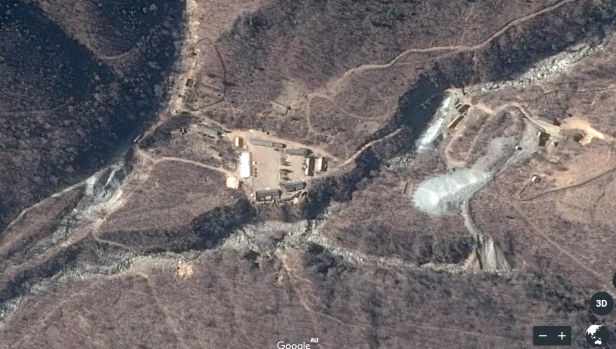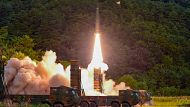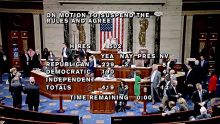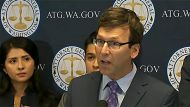Beijing: North Korea has conducted all of its underground nuclear tests beneath one mountain, Chinese scientists believe, prompting one to express concern the mountain may collapse, causing an environmental disaster.
"We call it taking the roof off," the China Institute of Atomic Energy's Wang Naiyan told the South China Morning Post.
More World News Videos
South Korea wants bigger warheads
South Korea's military says an agreement with the US to lift current limits on its missiles could help power up its capability to counter the North.
"If the mountain collapses and the hole is exposed, it will let out many bad things."
Chinese media reaction to the sixth nuclear test has been muted, social media comments censored, and the focus placed on the Chinese government's efforts to ensure the safety of its population through environmental monitoring for radiation leaks. China says no leaks have been found.

But geophysicists from the University of Science and Technology of China have examined seismograph records and say Sunday's underground nuclear test by North Korea was the fifth nuclear bomb to be exploded at the same mountain at Punggye-ri.
Professor Wen Lianxing from the university's Key Laboratory of Earthquake and Earth Physics said nuclear explosions were previously staged at the mountain in September 2016, January 2016, February 2013 and May 2009.
The researchers used satellite images and seismic data from 112 Chinese seismic bureaus in their study, which gave the positions of the tests accurate to within 100 metres, according to a statement published on the university's website.
"The Earthquake Laboratory of China University of Science and Technology has accurately identified all DPRK's nuclear test sites since it conducted its first test in October 2006, through its high-precision positioning system, revealing the geographical network of North Korea's Punggye-ri nuclear explosion infrastructure," it said.

Sunday's underground test resulted in two earthquakes, with other analysts suggesting the second could have been a tunnel collapse.
Wang, who is one of China's top nuclear scientists and the former president of the Chinese Nuclear Society, could not be reached for comment on Tuesday.

The United Nations Security Council was briefed on the hydrogen bomb test, the largest to be conducted by North Korea, with UN under-secretary general Jeffrey Feltman saying North Korea had also made a "rare reference" to electromagnetic pulse as a weapon.
Australian National University's head of nuclear physics, Andrew Stuchbery, said he hoped the North Korean report on the potential to use electromagnetic pulse by exploding a nuclear device at a height of 30 to 100 kilometres was just part of the propaganda war to unnerve the US.

"The scare is it could knock out the power grid and every mobile phone and send the US back to the stone age in one explosion," he said.
If a powerful bomb is detonated above the atmosphere, a tiny amount of gamma ray interacts with the atmosphere and causes an electromagnetic pulse that does damage in a few nanoseconds.
"There is less radioactive dust, but people would be killed in hospitals, cars would stop working, there would be chaos," he said.
He said North Korea was unlikely to have a powerful enough nuclear bomb to create an EMP attack in the short term, but the success of the hydrogen test could indicate they were on a pathway to doing it.
















28 comments
New User? Sign up